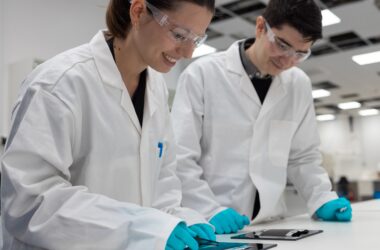On Monday, Japanese electronic parts maker TDK announced a significant material advancement for small solid-state batteries. The new development promises substantial performance improvements for wearable devices such as wireless earphones, hearing aids, and smartwatches.
TDK’s new material achieves an estimated energy density of 1,000 watt-hours per litre (Wh/l), approximately 100 times greater than the company’s current mass-produced solid-state batteries. This energy density is also about double that of lithium-ion batteries commonly used in smartphones.

The new battery features an all-ceramic material, using oxide-based solid electrolytes and lithium alloy anodes. The stability of the oxide material makes this composition extremely safe.
The higher energy density allows for smaller devices with potentially longer operating times. TDK aims to replace existing coin cell batteries in compliance with European Union battery regulations.
As an Apple supplier, TDK’s breakthrough could significantly impact the performance of Apple’s wearable products, such as AirPods and the Apple Watch. However, the technology still needs to be aimed at larger devices like smartphones due to the challenges of scaling up solid-state batteries.
While solid-state batteries offer advantages in safety, weight, and cost compared to liquid electrolyte batteries, larger-scale applications face technical hurdles. Their fragility makes their use in smartphones or electric vehicles unlikely in the near term.
Despite the challenges, industry experts see the potential for solid-state batteries in electric vehicles. Japanese automakers Toyota, Nissan, and Honda are targeting commercial production by the late 2020s. TDK plans to ship samples of its new battery prototype next year and move towards mass production after that.
TLDR:
- TDK developed a high-density solid-state battery material for wearables
- Energy density is 100 times greater than current solid-state batteries
- All-ceramic material with oxide-based electrolytes for enhanced safety
- Allows for smaller devices with longer operating times
- Challenges remain in scaling up solid-state batteries for larger applications





